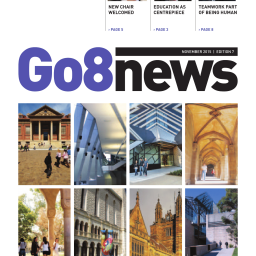May 10, 2017
The Australian, May 10, 2017
by Julie Hare
Higher tuition fees for students and a 2.5 per cent funding cut is “an opportunity lost but disaster averted”, said Michael Spence, vice-chancellor of the University of Sydney.
“It’s disappointing that after four years of debate about higher education reform in Australia that the best they can come up with is something that does nothing about the underfunding of research and does not seriously address the situation of disadvantaged students, particularly in relation to their living expenses,” Dr Spence said.
“These proposals will indiscriminately increase the costs for everyone. I think it will force some students to look more closely at the value of getting a degree, which is a pity because the long-term outcomes of having a degree benefit both the student and society at large.”
Under changes announced yesterday, students will be hit with a 7.5 per cent increase in tuition fees while being subject to a more onerous loan repayment regimen. The threshold at which they must start repaying will fall from $55,000 to $42,000.
At the same time, universities have been hit by a 2.5 per cent efficiency dividend, totalling $2.8 billion, but are relieved of the 20 per cent funding hit first proposed in 2014 by then-education minister Christopher Pyne but never implemented. Universities will be left relatively unscathed with higher student contributions compensating for the reduction on government funding.
Sydney University students Deidre Mair and Laurie Yutuc, both 21, said there was little sensitivity to the cost of a degree because of the delayed repayment system under HELP. While neither will be affected by the government changes, they said the costs of their education would be offset by positive graduate employment outcomes.
“I like to look at it as if you are passionate about what you do, then you will make it work,” said Ms Mair, a fourth-year civil engineering student.
Mr Yutuc, a third-year commerce student, had already secured a graduate position as an auditor with a consultancy firm.
However, for William Zhou, the cost of non-subsidised postgraduate places could be a significant factor in deciding his career. In his second year of a three-year science degree and with $24,000 in student debt, Mr Zhou said he was weighing-up moving into a postgraduate medical degree or undertaking a PhD, which ultimately would be a much cheaper option.
“If you look at postgraduate degrees you have to factor in all possibilities. I was thinking about doing a juris doctor, but if you don’t get a (government-supported place) that’s another $80,000 a year out of your pocket. It would be around $270,000 to get that degree.”





